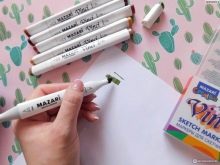All About Mazari Sketching Markers
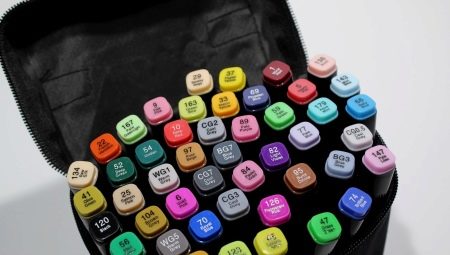
Sketching is advanced color painting. Under certain conditions, he helps in painting. Basically, sketch markers are used by designers, artists who have just begun to master painting. Sketch markers are popular due to the fact that in part they replace watercolor and oil brushes, making the work of the artist easier.
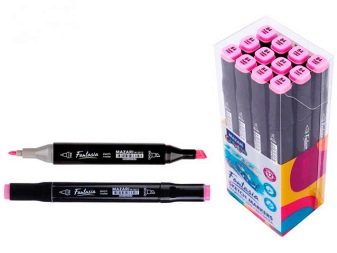
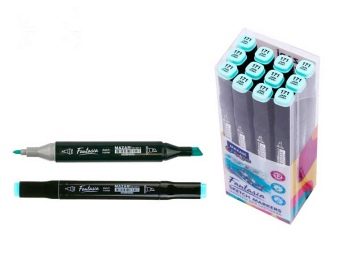
Advantages and disadvantages
Sketching markers have a number of benefits.
-
Wide range of shades. The professional kit allows you to work with hundreds of different shades. For beginners, cheap sets are only 10-20 marker-type markers, for experienced sketchers - 40-120.
-
Ease of drawing... Now there is no need to waste precious time, which is never too much, on drawing and painting over numerous closed contours with a thin brush or pen. The thick wedge-shaped nib allows you to do this in a matter of seconds. At the same time, unlike a bullet-shaped tip, it makes it possible to draw thin and thick outlines without the need to rotate the marker body, as would happen with conventional felt-tip pens that do not have this feature. Drawing work becomes much faster and easier.
-
Refueling option. Unlike a simple felt-tip pen and most construction markers used to mark parts from a drawing, sketch markers have the ability to pull out the drawing nib and pour new ink into the capsule body. These inks are made on an alcohol basis, but for sketching on paper and cardboard, on the contrary, non-drying oil dyes are provided.
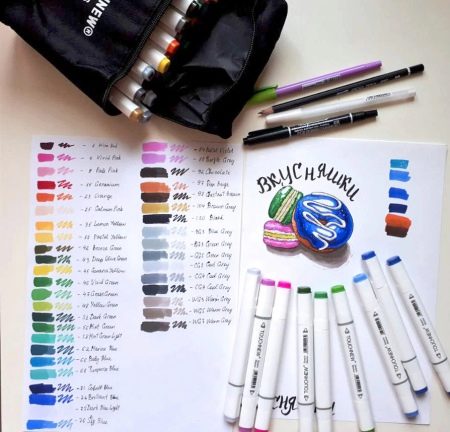
The disadvantage is the need to refuel the felt-tip pen.If the paints are on the classic palette, the easel lasts for a long time, then the marker is refueled much more often.
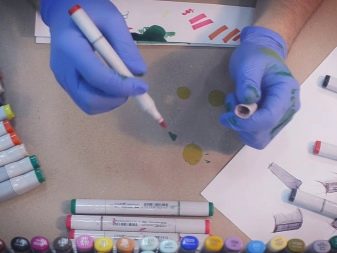
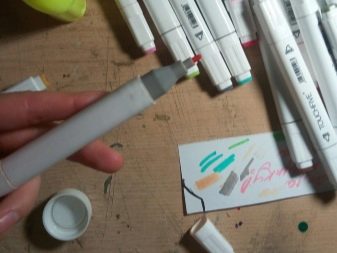
Variety of assortment
The range of goods for sketching diversifies due to sketch markers of bullet-shaped, brush-shaped, wedge-shaped, thin (contour) execution.
The variety of palettes is limited to 24 (for beginners), 60, 80, 124 colors (professional sets). The number of pieces (markers) usually coincides with the number of colors, but in special cases, manufacturers supplement some colors with duplicate products. For example, a set of 60 original colors is supplemented with spare markers for the main shades - black, bright and dark green, blue, red. Or, on the contrary, markers of rare colors are duplicated - terracotta, flesh-peach, beige, purple, lilac, bluish-turquoise, yellowish-white, pale pink and others. This measure is not widespread.
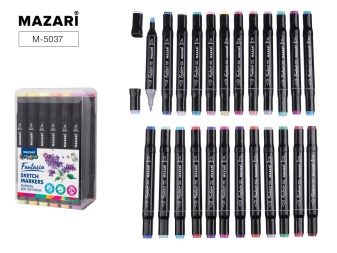
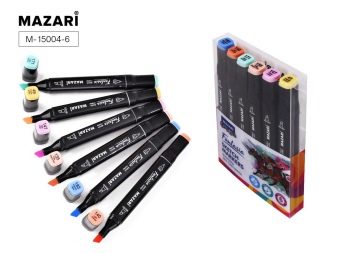
Professional kits are sold in square (cubic) container bags, in a tube, and also in the form of a set resembling a machine gun belt bandolier. By the type of filler, alcohol, watercolors (water-based), oil, with gel filler and others are distinguished.
-
Alcoholic beverages are quick-drying ones - they are more often used by professionals. "Self-made", wishing to reduce the cost of their hobby, fill some markers of primary colors with ink from a regular ballpoint pen and other alcohol-soluble dyes diluted in vodka (40% ethanol) or isopropyl alcohol washer, which is used for car windshield wipers. The dye, like alcohol, should not be poisonous and dangerous to humans.
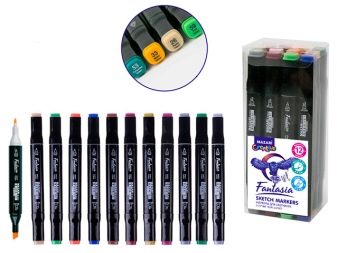
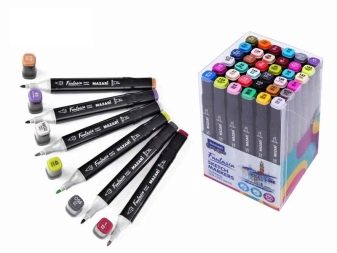
- Oil markers are slow drying. Here only the coloring matter itself plays a role. The oil-soluble dye is diluted in vegetable oil, engine and transmission oils. The disadvantage is the unsuitability of "cold" and pale, faded shades: a marker refueled in this way can give out a completely different color. For example, refueling with green or blue mineral mining, you can get almost black shades of an incompletely defined color.
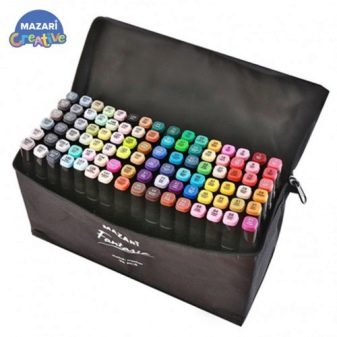
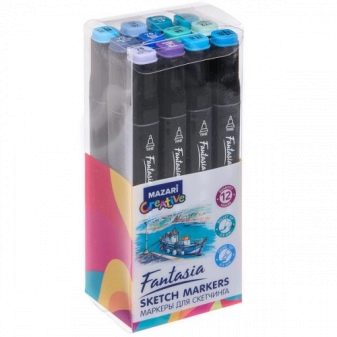
- Watercolor occupy an intermediate position between fast and slow drying. Powders and dyes diluted with water are used for them.
Advantage - no need to look for a special solvent: you can make a dark marker more liquid by temporarily turning it into a light one with tap water.
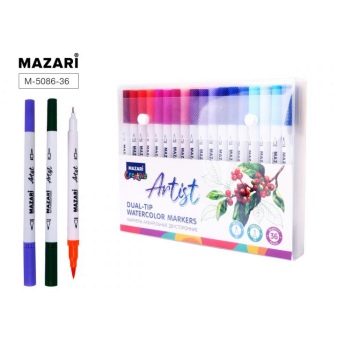

Which one to choose is up to you. The disadvantage of alcohol is that, due to the rapidly evaporating alcohol, they do not tolerate the master's long meditation on the depicted image. They are mainly used by professionals whose work does not stand still for a second. Oil markers and watercolor markers can be “fed” with new ink by wetting the refill - however, this method is time-consuming.
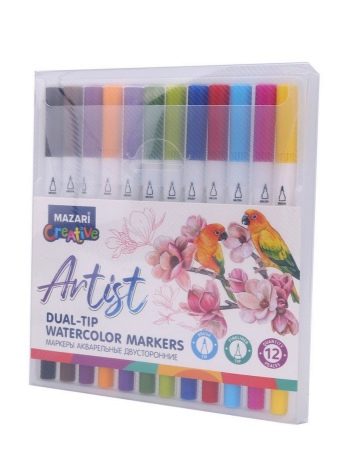
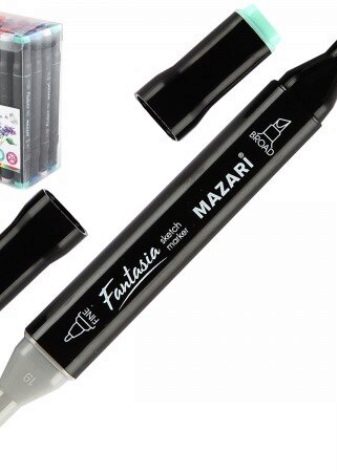
Finally, by design, markers for sketching are subdivided on one-sided and two-sided. The first ones contain only one "feather" - at the opposite end there is a rubberized (rubberized) cap, under which the inner space of the ink capsule immediately opens. In this case, the rod (bullet or wedge-shaped) can be non-removable, firmly fixed. The second type is removable rods, but no less tightly fitting to the clearance hole body. The capsule reservoir is filled from both sides. One "feather" is wedge-shaped (a bar with an external oblique saw cut), the second is bullet or racemose.

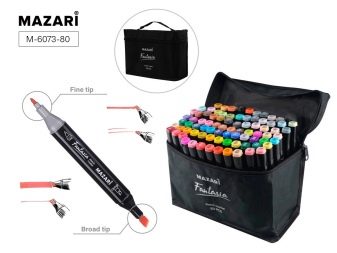
The most popular brands among manufacturers Mazari Fantasia, Aqua Box, Pencil Box, Radiance.
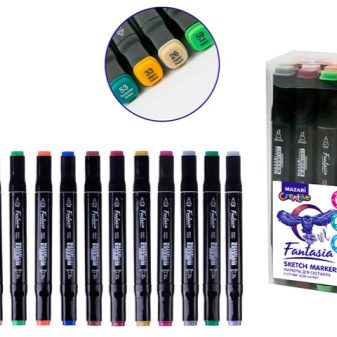
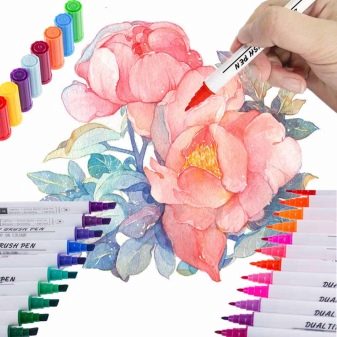
Features of use
Refueling of the marker is made from branded capsules that come with the kit. In most cases, the user-sketcher buys them in addition on their own. They are sold in the same stores. If a dye of a certain tone has run out, then you can either buy it in your city, or order it via the Internet.It is possible to guess that the marker needs refueling by a sharp deterioration in the brightness of the coloring composition, significant efforts of the sketcher's hand, long drawing and painting of closed areas in the drawing, uneven coloring of the applied stripes and lines, as well as the "dry" sound of the pen with its accelerated abrasion ... To prime the marker, do the following.
-
Remove the cap.
-
Remove the drawing pen... This can be done with forceps, pliers. Do not use tweezers, knives, pliers - damage the rod.
-
Open the dye bottle of the desired color and fill it from the standard spout. This can also be done through a syringe, but it is not recommended - there is never enough dye to leave it on the walls of foreign containers.
-
After making sure that the dye has leaked into the marker capsule, close the bottle... Gently squeeze (press) the drawing rod into place.
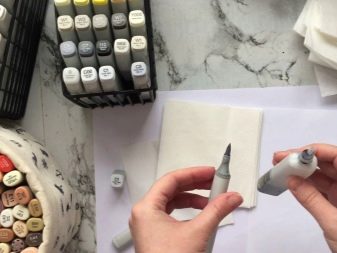
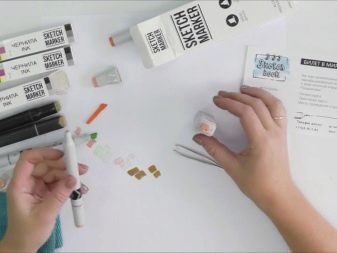
Shake the marker. The dye will dye the rod in a bright color, impregnating it. The product is ready for use. You cannot change the type of filler and solvent in the marker. For example, water top-up is useless for alcohol and oil markers - water will not dissolve the base color.
In addition, the leaky cap of the oil marker will not hold the alcohol vapor - the latter will quickly evaporate through the cracks and gaps in the cap, the same will happen after a while with watercolors.
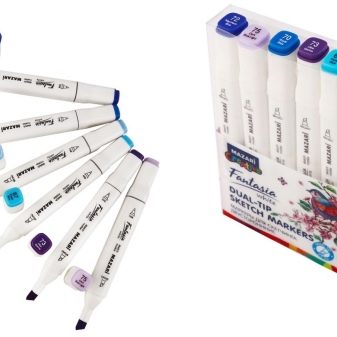
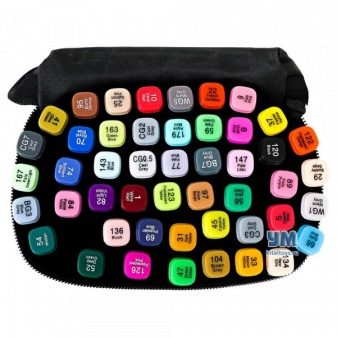
Review overview
According to user reviews, most of the eminent companies produce durable products. Of these, alcohol does not evaporate during storage. And the dye lasts for a long time.
However, some note that the dye in some models is too liquid - the paper is soaked through, which makes the second sheet wet in the stack. This drawback can be easily eliminated by placing the sheet, for example, on a drawing board.

